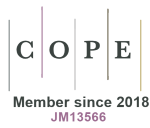Most read articles by the same author(s)
- Enrico Varricchio, Alessandro Puntoni, Domenico Giannese, Claudia Mannucci, Piera Serio, Raffaele Caprioli, Alberto Lippi, Maria Francesca Egidi, Adamasco Cupisti, Flow estimate of arteriovenous fistula by thermodilution in patients on chronic hemodialysis: monocentric experience , Giornale di Clinica Nefrologica e Dialisi: Vol. 32 No. 1 (2020): January-December 2020
- Patrizia Calella, Claudia D’Alessandro, Domenico Giannese, Massimiliano Barsotti, Vincenzo Bellizzi, Nutritional intakes in Italian kidney transplant recipients , Giornale di Clinica Nefrologica e Dialisi: Vol. 30 No. 2 (2018): April-June 2018










